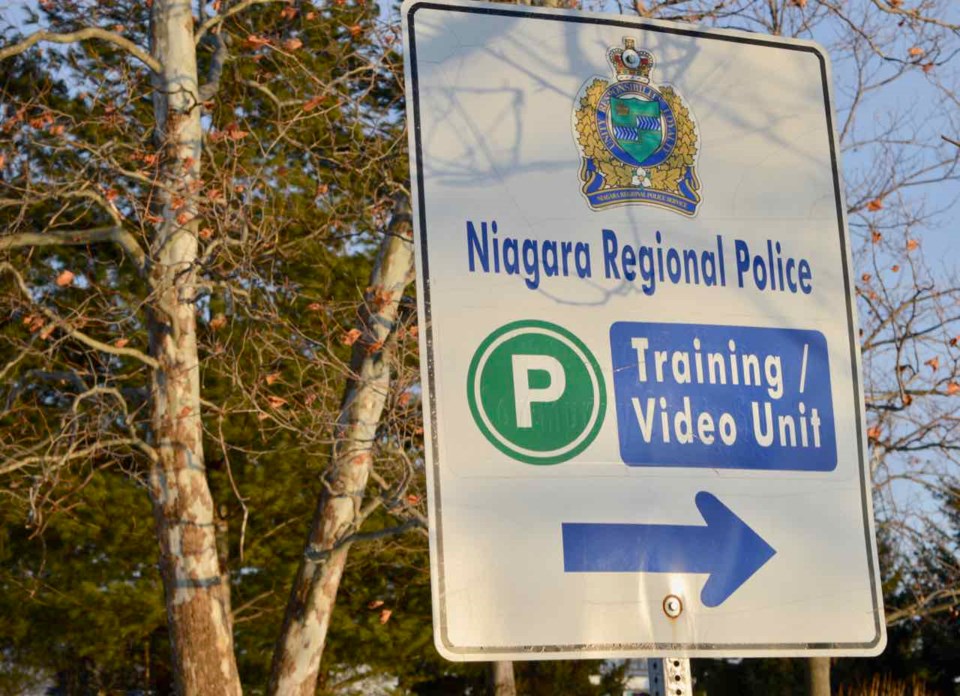“It’s the largest hiring since 1971,” said Ken Gansel, Chair of the Regional Municipality of
Niagara Police Services Board, in reference to the recent decision to hire 40 additional front-line
officers for the Niagara Region, effective July 1st. This bolsters the number of front-line officers to 767 strong, notes Rich Gadreau, Sergeant of
the NRP’s Recruiting Unit.
“Thorold is a patrol district and a part of the St. Catharines detachment,” known as District 1, said Gansel, adding: “Thorold is well served as a part of the St. Catharines detachment.”
The NRP and other policing establishments are “mobile forces and we go to you,” so it’s not necessary to have detachments in every community. While office precincts may offer a sense of police presence, Gansel said police officers are rarely in the building and out on calls. Police detachments are located where they best serve the community, he pointed out.
The long-awaited new police detachment being built on Welland Avenue between Geneva and Niagara Streets in St. Catharines, “about “four stops from the 406,” for quick accessibility should be completed by mid-September, he exclaimed. When asked why some residents in small towns believe they have only one or two officers policing them, Gansel said that’s a misconception and “totally incorrect.” Police officers are dispatched accordingly. Overall, it’s the responsibility of the chief of police to determine where police officers are stationed, he said.
The 40 new officers are being hired as a result of a study commissioned by Chief of Police, Bryan MacCullouch’s, which noted statistics on man hours and numbers of service calls indicating more patrol officers were needed. This report, which is reflected in the 2020 operating budget, was approved by the police services board and the Niagara Region. Excerpts from the police services presentation to the Niagara Region states this year $1.9 million is allocated in the budget to pay for the new hires, and the cost estimated to retain them will be about $3.8 million annually.
While Sgt. Gadreau didn’t have data on the response time of service calls, he said that area of expertise is monitored by the emergency communications unit. The number of officers hired is mainly determined by the number of calls. According to the police services board report, NRP’s calls for service increased by 11.8% between 2014 to 2018. Calls jumped 2.3% to 130,000 in 2019 and are estimated to increase by another 2% this year or roughly 133,000.
These figures also factored in predictions of Niagara Region’s population
growth. The report states: “Frontline investment is expected to help police improve service to call response time and to meet increasing demands,” as well as to “reduce the public safety risk.” A career in policing has become increasingly “diversified,” noted Sgt. Gadreau, adding: “It’s much more than just being a beat cop and a detective now.” There are many specialty areas associated with policing that address: elder abuse, sex crimes, and mental health. However, these new hires are front-line officers, which the NRP plans to deploy by 2021. In excess of 20 officers are also scheduled to retire this year.
When asked if 40 patrol officers will make a significant difference, Sgt. Gadreau pointed out. the “average person” may not notice 40 officers once they are assigned across the different areas and platoons. Unfortunately, Sgt. Gadreau said job applications to the NRP have decreased by a half in the
last seven years, and police forces across Canada are experiencing similar trends. He believes social media, which tends to emphasize the negative aspects of policing is partly the cause.
As a result, the NRP takes “any opportunity we can to create information sessions,” and get involved in job fairs and other similar events. Sgt. Gadreau said the NRP is often at Niagara College and Brock University to meet with potential applicants, and recently the NRP held a career fair for indigenous persons, a women’s international event, and an information session to attract members of the Asian community.
“We try to build bridges,” he exclaimed.
While the NRP believes in diversity, Sgt. Gadreau said: “We don’t have a criterion or a number for minorities and women. Our process is fair and equitable, and everyone has the same chance as anyone else, regardless of gender and racial background.”
In regard to having a preference for hiring former military personnel or someone with military training, he replied: “No, I wouldn’t say there is a preference. We look at what they’ve done with what they’ve got. We’ve received good applicants from all areas.”
When asked if there were additional training available to assist police officers in dealing with persons with mental health issues, he simply said: “police officers have been trained in this area for years.” “Each case is different.” While this is the largest hiring in decades, Sgt. Gadreau said the NRP may be hiring again next year to “keep up with the demand for officers beyond 2020.”
For those who are contemplating a career in policing, he suggests visiting the NRP website for recruiting information, which includes information on hiring civilians, as well. “Now is the time,” he added.



